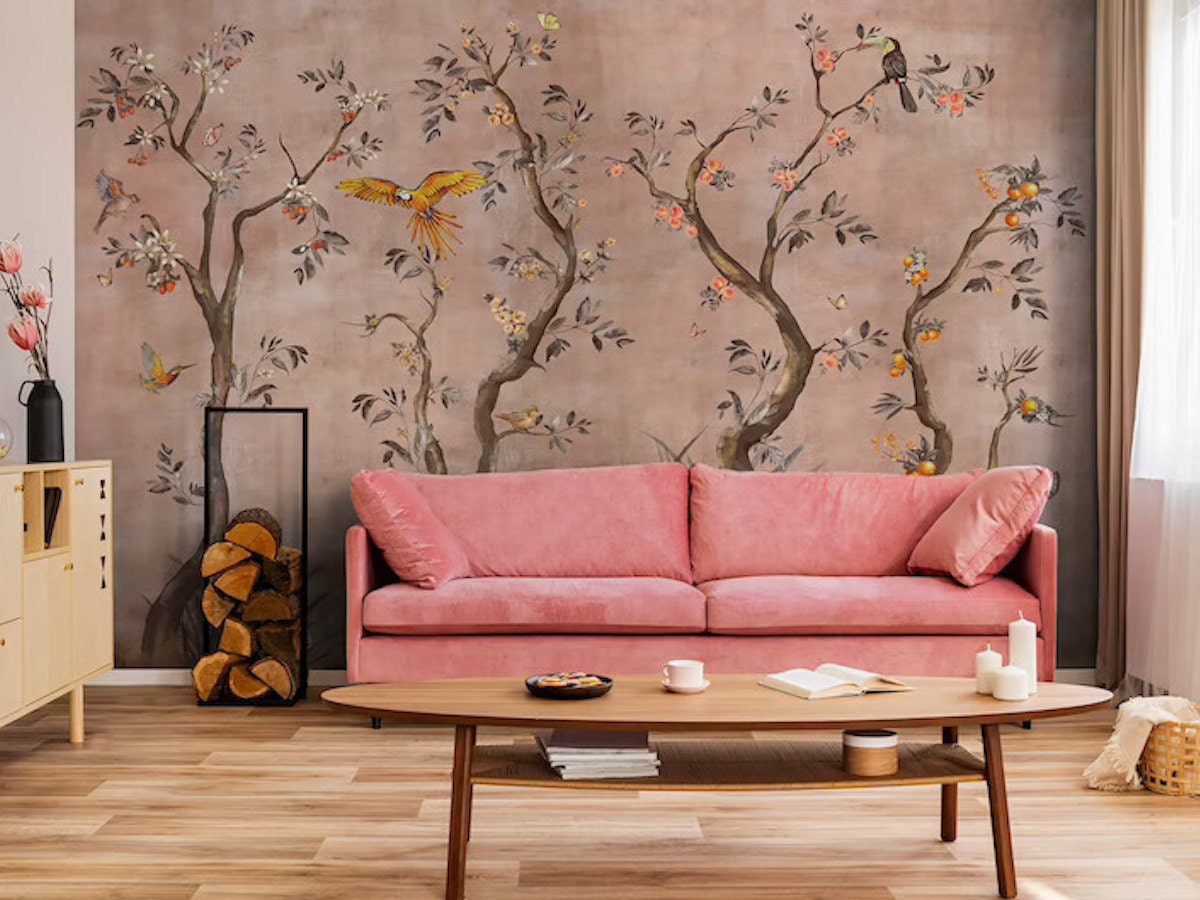A Diploma in Interior Design in Bangladesh equips students with practical skills and theoretical knowledge to excel in the design industry. This program typically spans one to two years, offering a blend of creative and technical education.
Diving into the realm of Interior Design through a diploma course in Bangladesh fosters a comprehensive understanding of space management, materials, and aesthetics. Aspiring interior designers learn to marry functionality with artistry, tailoring their designs to enhance living spaces, corporate offices, and commercial establishments.
The curriculum is designed to build a strong foundation in design principles, CAD software, and project management. With a focus on sustainable practices and local cultural influences, students are prepared to meet the industry’s evolving demands. Successful graduates of this diploma can pursue careers as interior designers, space planners, or visual merchandisers in a market that appreciates innovative and practical design solutions. This course can be a stepping stone towards a thriving career in Bangladesh’s growing real estate and architecture sectors.

Credit: auralex.com
The Allure Of A Diploma In Interior Design
Why Choose Interior Design?
The call of interior design lies in its blend of artistry and functionality. It demands vision and precision, making every project a unique challenge. With a diploma, students master these elements:- Technical skills for detailed work
- Design principles to guide aesthetic decisions
- Creativity to innovate and inspire
- Business knowledge to thrive in the market
Career Opportunities In Bangladesh
The demand for skilled interior designers grows in Bangladesh. Here are the top career paths:| Position | Opportunity |
|---|---|
| Residential Designer | Customize private living spaces |
| Commercial Designer | Revamp retail and office areas |
| Showroom Consultant | Guide clients on material choices |
| Furniture Designer | Create standout pieces |
| Event and Set Designer | Bring visions to life for events |

Credit: www.etsy.com
Educational Framework
Core Subjects In The Curriculum
Bangladesh’s diploma focuses on core subjects vital for interior designers. Students explore a diverse range of topics. This prepares them for the complexities of the field.- Design Fundamentals – the basics of design concepts and applications.
- Drawing and Visualisation – skills for effective representation of design ideas.
- Materials and Construction – knowledge of various materials and construction techniques.
- Space Planning – mastering the art of efficient layout and space utilization.
- History of Interior Design – insights into the evolution of design aesthetics and principles.
- Computer-Aided Design (CAD) – technical training in industry-standard design software.
Duration And Academic Cycles
The diploma usually spans over 2 to 3 years. This comprises consecutive academic cycles. Each year consists of two semesters, streamlining the learning process.| Year | Semesters | Total Duration |
|---|---|---|
| First Year | 2 | 2-3 Years |
| Second Year | 2 | |
| Final Year | 2 |
Top Institutions For Interior Design
Ranking And Reputation
Choosing a highly-ranked institution is crucial. A reputable college often guarantees quality education and opens doors to better career opportunities. Prospective students should focus on colleges that top the charts. They feature in educational rankings and have a track record of success. These institutions usually boast impressive alumni networks too.- Bangladesh University of Engineering and Technology (BUET)
- BRAC University
- Shanto-Mariam University of Creative Technology
- Dhaka Art Center
Facilities And Faculty
The quality of facilities and faculty plays a significant role in education. State-of-the-art labs and classrooms boost learning experiences. Dedicated studio spaces, computer labs, and libraries are essential.| Institution | Facilities |
|---|---|
| BUET | Advanced design studios, extensive libraries |
| BRAC University | Modern workshops, digital resource centers |
| Shanto-Mariam University | Creative labs, industry-standard tools |
| Dhaka Art Center | Exhibition spaces, multimedia studios |
Financial Investment
Tuition Fees Across Colleges
Tuition fees for an Interior Design Diploma can vary widely. Factors like college prestige, location, and course duration affect costs. Let’s break down the typical fees.| College | Location | Average Tuition (BDT) |
|---|---|---|
| Dhaka Design Institute | Dhaka | 1,50,000 |
| Chittagong Creative College | Chittagong | 1,20,000 |
| Khulna Academy of Design | Khulna | 1,30,000 |
Scholarship Opportunities
Scholarships can significantly reduce financial strain. They are based on merit, need, or specific criteria set by the institution.- Merit-Based Awards: For top scorers in entrance exams or existing academic achievements.
- Need-Based Scholarships: For students who show a compelling financial need.
- Women in Design Scholarship: Dedicated to encouraging female participation in the field.
Skill Development Through Coursework
Practical Workshops And Studio Sessions
Engagement in hands-on workshops is critical for budding interior designers. Lively studio sessions form a core part of the coursework, where students:- Apply design theories in real-world scenarios.
- Collaborate with peers on projects.
- Receive personalized feedback from industry experts.
- Build their portfolios with original, innovative designs.
Software Mastery And Technical Training
Interior design today is deeply intertwined with technology. The coursework places a strong emphasis on:- Mastering industry-standard software such as AutoCAD, SketchUp, and Adobe Suite.
- Understanding building information modeling (BIM) techniques.
- Training in 3D visualization and rendering for realistic design presentations.
Interior Design Specializations
Residential Space Planning
Mastering the art of residential space planning stands at the heart of interior design. It involves tailoring private living areas to meet the intricate needs of families. Essential aspects include:- Optimizing layouts for comfort and flow
- Integrating storage solutions that are both practical and stylish
- Selecting materials and finishes that reflect personal tastes
Commercial And Retail Design
Designers with a knack for commercial spaces find a wealth of opportunities. Key elements in this specialization are:| Aspect | Focus |
|---|---|
| Brand Identity | Crafting spaces that embody a company’s essence |
| Functionality | Designing for customer experience and staff efficiency |
| Innovation | Incorporating cutting-edge design trends |
The Role Of Internships
Internship Opportunities And Their Importance
Numerous design firms and architecture agencies in Bangladesh offer internships to students enrolled in interior design diplomas. These opportunities allow interns to:- Apply academic knowledge in real project settings.
- Understand workplace dynamics and client interactions.
- Build a strong portfolio of practical work.
- Form professional connections that can lead to job offers.
| Benefits | Description |
|---|---|
| Professional Growth | Interns develop skills and gain experience that accelerates their career progress. |
| Networking | Engaging with industry professionals expands their contact base for future opportunities. |
| Portfolio Development | Interns work on diverse projects, adding substantial work to their portfolios. |
Transition From Academic To Professional Life
Internships serve as a crucial transitional phase for students. They experience a shift from classroom-based learning to the everyday challenges of the design world. Interns learn to:- Manage time efficiently amidst tight client deadlines.
- Communicate effectively with team members and clients.
- Navigate through the nuances of project management.
Portfolio Building Strategies
Creating A Compelling Portfolio
Start by collecting your best work. A good portfolio highlights variety, creativity, and your design process. Consider these tips:- Show a range of projects: From residential to commercial design, display your adaptability.
- Include sketches and final renderings: Demonstrate how your ideas evolve from conception to reality.
- Describe each project: Even kids should understand the challenges you faced and how you overcame them.
- Professional photos are a must: High-quality images ensure your designs look their best.
Exhibiting Your Work To Potential Clients
Your portfolio is ready. Next up, present it wisely. Aim for visibility and easy access:- Create a personal website: This becomes your digital portfolio. Keep it updated.
- Use social media: Platforms like Instagram and Pinterest attract visuals lovers.
- Network at events and fairs: They offer a live audience for your work.
- Prepare printed copies: Some clients prefer something tangible.
Industry Connections And Networking
Events And Trade Shows
Events and trade shows are the heartbeats of the design industry. They offer a chance to see new trends, innovative products, and meet peers. In Bangladesh, diploma students often get exclusive access to these events:- Design Expo Bangladesh: A hub for showcasing local talent.
- Bangladesh Interior Design Week: Features seminars and workshops.
Professional Associations And Memberships
Joining a professional association is pivotal for any interior design student. Memberships often provide access to resources, educational tools, and more:| Association | Benefits |
|---|---|
| IIDFB | Networking, recognition, and competitions. |
| BDID | Professional development, job boards. |
Legal Aspects Of Interior Design
Licensing And Regulations In Bangladesh
Designers must meet legal standards. Licensing is key. It ensures quality and safety in design work.- Documentation: Obtain a valid license before practicing.
- Regulatory Body: The Institute of Architects Bangladesh (IAB) governs practice standards.
- Legislation: Follow the National Building Code and other local laws.
Intellectual Property In Design
Original designs need protection. Intellectual property rights come in here.| Type | Description | Protection |
|---|---|---|
| Copyright | For artistic creations | Life + 50 years |
| Trademark | For brand elements | Renewable every 10 years |
| Patents | For inventions | 20 years |
Emerging Trends In Interior Design
Sustainable And Eco-friendly Practices
Bangladeshi interior designers are embracing green design methods. They focus on sustainability. This aligns with global concerns for the environment. Living spaces now frequently feature:- Recycled materials
- Natural light maximization
- Energy-efficient appliances
- Indoor plants for cleaner air
Innovations In Design Technology
A push towards technology integration elevates interior design to new heights. From 3D modeling software to augmented reality, designers use advanced tools to visualize and execute their ideas. Popular technological advancements include:| Technology | Application |
|---|---|
| 3D Printing | Custom Decor Items |
| Virtual Reality | Space Simulation |
| Augmented Reality | Real-time Design Overlay |
| Building Information Modeling (BIM) | Efficient Planning |
The Digital Presence Of Interior Designers
Leveraging Social Media
Social media platforms are powerful tools for interior designers to showcase their portfolios. Designers can share their work through captivating images and stories, connecting with potential clients and fellow designers.- Facebook: Creates a community around your work.
- Instagram: Ideal for visual storytelling with photos and reels.
- Pinterest: Helps clients find inspiration and designers to trend.
- LinkedIn: Connects professionals and amplifies credibility.
Digital Marketing For Design Professionals
Digital marketing can turn a local designer into a recognizable brand. Implementing strategies such as SEO and email marketing drives more traffic to their portfolio.| Marketing Strategy | Benefits |
|---|---|
| SEO | Boosts website visibility on search engines. |
| Email Marketing | Keeps clients informed and engaged. |
| Content Marketing | Attracts new audiences with relevant articles and tips. |
Starting Your Own Interior Design Business
Entrepreneurial Skills For Designers
Developing entrepreneurial skills is crucial for anyone looking to start their own business. Here are key skills to focus on:- Market Research: Understand interior design trends and customer preferences.
- Networking: Build relationships with suppliers and clients.
- Branding: Create a unique identity for your business.
- Communication: Convey your ideas effectively to clients and team members.
- Financial Literacy: Manage budgets, pricing, and financial planning.
Business Planning And Management
Next, let’s delve into the pillars of business planning and management:- Business Plan: Outline your business goals, strategies, and financial projections.
- Operations: Streamline processes for efficiency and quality control.
- Project Management: Keep projects on track with timelines and deliverables.
- Client Management: Maintain strong client relationships for repeat business and referrals.
- Risk Management: Anticipate and mitigate potential business risks.
Client Relationship Management
A diploma in Interior Design in Bangladesh equips you with more than just design skills; it teaches the art of Client Relationship Management. Mastering this can set you apart in the vibrant world of interior design. It is all about understanding, trust, and retention. Let’s explore these crucial areas further.
Understanding Client Needs
Accurately assessing the needs of a client is the first step toward a successful design project. It involves active listening and translating their ideas into practical designs. Here is how to do it effectively:
- Communicate clearly and frequently.
- Ask questions to clarify their vision.
- Use visual aids, like mood boards, for better understanding.
- Create a detailed brief to reflect what you have learned.
Building Trust And Retaining Clients
Building trust is about showing reliability and delivering on promises. Retention comes from exceeding expectations. Here’s what to focus on:
| Action | Impact |
|---|---|
| Showcase past successful projects | Builds credibility |
| Always be transparent | Establishes honesty |
| Meet deadlines consistently | Demonstrates reliability |
| Provide post-project support | Strengthens relationships |
Remember, happy clients become repeat clients, and they bring new ones through positive word-of-mouth.
Staying Ahead With Continuing Education
Advanced Certifications And Courses
Advancing your education equips you with cutting-edge knowledge. It signals dedication to your craft. Dive into specializations or pursue higher certifications through these options:- 3D Visualization: Grasp the power of virtual designs with courses in 3D modeling software.
- Green Design: Become an expert in sustainable practices, a rapidly growing niche.
- Project Management: Enhance leadership skills with courses focused on managing design projects.
Importance Of Lifelong Learning
Lifelong learning is non-negotiable in the design industry. It’s more than acquiring new skills; it’s about continuous self-improvement. Exploring further education can:- Keep you abreast of trends and industry shifts.
- Open doors to innovative concepts that elevate your designs.
- Help build a diverse portfolio that attracts a broader clientele.
Case Studies: Success Stories
Local Pioneers In Interior Design
Bangladesh has produced several interior design wizards. These trailblazers have reshaped living spaces into works of art. They have transformed the mundane into the sublime with their creative prowess. Below are profiles of individuals who have made their mark:- Arif Hossain: Founder of ‘Creative Interiors’, Arif’s designs reflect cultural heritage merged with modern aesthetics. His work has rejuvenated numerous commercial and residential spaces.
- Mina Chowdhury: Leading ‘Elegant Designs’, Mina introduced eco-friendly practices in her projects, winning her national accolades and recognition.
- Rahim Sheikh: ‘Innovative Spaces’ stands as Rahim’s testament to blending functionality with elegance, earning him international acclaim and clientele.
Success Metrics In The Industry
Determining the success of the interior design sector in Bangladesh requires a look at definitive metrics. These metrics are a testament to the industry’s robust growth. Here’s how success is measured:| Success Indicator | Impact |
|---|---|
| Graduate Employment Rate | Over 80% of diploma holders find industry jobs within six months of graduation. |
| International Awards | Bangladeshi designers have won over 10 international awards in the past five years. |
| Client Satisfaction | More than 95% client satisfaction reported through reviews and testimonials. |
| Market Growth | Annual industry growth exceeds 10%, showcasing rising demand and economic contribution. |
Challenges Faced By Interior Designers
Navigating Market Competition
In the bustling world of interior design, standing out is key. Designers must not only be creative but also adept in business strategy to stay afloat. Here are key obstacles in the competitive interior design market:- Staying updated with latest design trends
- Offering unique solutions to retain clientele
- Marketing effectively to build brand recognition
Coping With Creative Blocks
Creative block is a real issue for designers, often striking unexpectedly. It can stem from various sources and can impede the process of creating fresh, innovative designs. Here’s how designers might tackle this challenge:| Method | Action |
|---|---|
| Seeking Inspiration | Visit art galleries, explore nature, or browse design portfolios |
| Collaboration | Engage peers for brainstorming and feedback |
| Rest and Recovery | Take short breaks to recharge creativity |

Credit: www.foresthomesstore.com
Cultural Influence On Interior Design
Incorporating Bangladeshi Heritage
Tradition plays a pivotal role in design. Local materials and age-old motifs are essentials. Students of interior design learn to infuse spaces with elements that reflect national heritage. Consider the following:- Handloom Fabrics: Textures that narrate artisanal history.
- Jute and Bamboo: Materials that speak of sustainable roots.
- Traditional Patterns: A narrative of cultural identity on walls and furnishings.
Global Vs. Local Design Tendencies
Interior design in Bangladesh is a dialogue between global and local trends. Here’s how designers strike a balance:| Global Influences | Local Tendencies |
|---|---|
| Minimalism and Functionality | Rich Colors and Ornate Carvings |
| Industrial Aesthetics | Rural and Handcrafted Elements |
| Smart Home Technologies | Communal Living Spaces |
The Impact Of Globalization
International Trends Influencing The Local Market
Bangladeshi designers stay updated with global movements. They can apply themes like minimalism, sustainability, or maximalism in their work. These trends might start in Scandivania, Japan, or New York. Yet, they find a place in Bangladeshi homes. This opens up new possibilities for design innovation.- Minimalism: Sleek, simple spaces
- Eco-friendly: Green designs with sustainable materials
- Technological Integration: Smart homes with the latest tech
Collaborating Across Borders
With the internet, Bangladeshi students can collaborate with anyone. They join projects globally. This exposes them to diverse design philosophies and techniques. Real-time communication tools mean these collaborations are seamless and efficient.| Collaboration Tools | Benefits |
|---|---|
| Video Conferencing | Face-to-face meetings anywhere |
| Cloud Sharing | Instant file access and sharing |
| Project Management Software | Keep track of projects in real-time |
Future Prospects In Interior Design
Anticipating Market Changes
Being an interior designer means staying ahead of trends. It involves:- Researching new materials and design methods
- Adapting to technology advancements such as VR and 3D modeling
- Understanding the changing preferences of consumers
Preparation For A Dynamic Career Path
Interior design is not just about picking colors or arranging furniture. It’s about creating functional, beautiful spaces that enhance quality of life. A Diploma in Interior Design equips you with:- Solid foundation in design principles
- Practical skills for real-world application
- Networking opportunities with professionals and clients
| Career Path | Description | Places of Employment |
|---|---|---|
| Residential Designer | Customizing living spaces for homes | Design firms, freelance |
| Commercial Designer | Reimagining spaces for businesses | Corporates, hospitals, schools |
| Showroom Manager | Displaying design elements effectively | Retail stores, design centers |
Frequently Asked Questions For Diploma In Interior Design In Bangladesh
How Can I Study Interior Design In Bangladesh?
Enroll in a college that offers interior design courses in Bangladesh. Explore options like BRAC University or Dhaka University. Alternatively, consider online courses or institutes that specialize in design. Confirm their accreditation for recognized qualifications.
Which Diploma Is Best For Interior Designing?
The best diploma for interior designing is one that offers comprehensive training, hands-on experience, and industry recognition. Seek accredited programs like the National Diploma in Interior Design or the Diploma of Interior Design and Decoration.
How Many Years Is The Diploma In Interior Design?
A diploma in interior design typically spans 2 to 3 years, depending on the program’s structure and pace.
How Much Does Interior Design Cost In Bangladesh?
Interior design in Bangladesh can cost between BDT 50,000 to over BDT 500,000, depending on project size and designer expertise. Costs vary widely based on materials, complexity, and customization.
Is A Diploma In Interior Design Valuable In Bangladesh?
A diploma in interior design is considered valuable in Bangladesh due to the growing demand for skilled professionals in the booming construction and real estate sectors.
Conclusion
Embarking on a journey through interior design education in Bangladesh opens doors to creativity and innovation. This diploma offers the skills needed to transform spaces, reflecting personal aesthetics and functional needs. As the industry grows, so does the demand for qualified designers.
Graduates are poised to shape the environments we live in, making dreams of beautiful, practical spaces a reality. Embrace opportunity, design your future.









